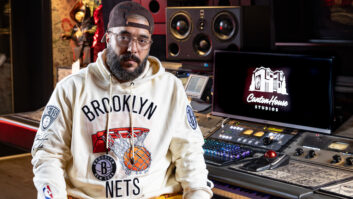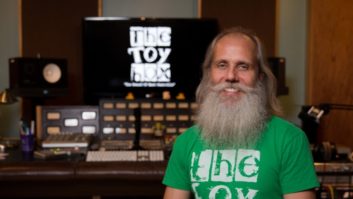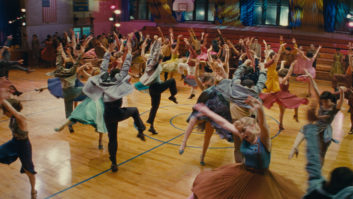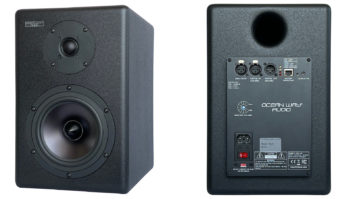
The music industry is founded on dreams, magic and, sometimes, ahefty dose of illusion. For artists, engineers, producers — andstudios — the maxim “You’re only as good as your latesthit” often holds true. Because of that, in the competitive andimage-conscious world of recording studios, it’s difficult to getpeople to talk honestly, on the record, about the realities of theirbusiness. For this story, however, several of them did.
Many — maybe most — studios weren’t founded ontraditional business principles and they have never been hugelyprofitable. From the rise of independent studios in the 1960s and ’70s,through the downturn of 1979, the go-go ’80s, an early 1990s recessionand the boom years of late ’90s hip hop and pop, studios have had theirups and downs. It’s often remarked that rates charged by top recordingfacilities hit their peak sometime in the ’70s, while the expense ofsalaries, real estate and, above all, equipment have increased —along with inflation — exponentially. So, no, a recording studiohas never been a great place to make a lot of money, and after the grimeconomics of the past two years, there are few who aren’t aware of thatfact. With budgets slashed and home studios the norm, there’s lessbusiness to go around. Many facilities have closed their doors and manymore are for sale — with few takers.
Still, the question, “Is it the end for commercial recordingstudios?” brought an emphatic “No!” from a surprisingnumber of veteran players. They’re cutting costs, making deals, takingsalary cuts, working harder and making tough decisions.
KEEPING PERSPECTIVE
Larrabee Studios, with seven rooms in three locations, is LosAngeles’ largest recording operation, as well as one of its mostsuccessful. Owner Kevin Mills has maintained for some time that,examined in the context of the economy as a whole, the recent deluge ofpress about the music industry downturn is somewhat exaggerated. Citinga February 10 article from Business Week, Mills comments,“It’s [got] a fascinating statistic chart of retail music sales.In 2002, there was a downturn of 8.5 percent from 2001. But book saleswere also down, as well as theme park attendance, advertising revenues,baseball — we could go on and on. Even at 2002’s declined level,20 percent more CDs were sold than in 1998, back before CD burning,downloading, MP3 and all the woes of the labels.
“What that means to me,” he continues, “isperspective. The late 1990s were boom years for the economy in general.Now we’re in a recession, with unemployment at a nine-year high. Retailsales are down overall, and there’s a giant restructuring going on. Themusic industry is essentially owned by five companies. At least two ofthe companies — AOL Time Warner and Vivendi Universal — arein financial difficulty, not because of their music divisions butbecause of the rest of their companies. And Sony is affected by theterrible Japanese economy, where the stock market just hit a 20-yearlow.”
Mills points to the massive sales of rapper 50 Cent’s debut release,along with Eminem’s recent multi-Platinum CD, as examples that musicretailing is far from dead. “The demographic most likely todownload music for free is males 16 to 20,” he notes.“That’s also the demographic that’s bought 12 million Eminem CDs,a good measure in any year! There’s a plethora of fresh, young talentselling multi-Platinum, whether it be Avril Lavigne, Pink, MichelleBranch or Norah Jones. And look at how the older generation is selling:Santana, O Brother, Elvis, The Beatles and PaulMcCartney.”
While Mills sees promise in the music industry, he admits that therecording side of it is in for a rough ride. “Certainly, thestudio business was overbuilt,” he contends. “In recenttimes, money was cheap; it was boom times, like the stock market. A lotof people thought all they had to do was buy an SSL and some speakersand it would be, ‘Roll up the Brink’s truck.’ There were alot of new operations that were not all that well-thought-out in termsof a business plan.
“The reality is, if you run a large-format-console studio,you’ve got to be able to offer more at a better value every year. It’sno different from Macy’s! The competition is constant, and you have toconstantly refine your business and the price.”
LOCATION, LOCATION, LOCATION

Prime location — in musician-rich Marin County, Calif. —has helped keep The Plant in Sausalito going for almost 30 years. But agreat location, and even a star-studded clientele with chart-toppingalbums, doesn’t guarantee that a studio will make money. “A lotof people have called me in the last year to ask if it’s true that ThePlant is closing,” admits owner Arne Frager. “I suppose thereason is that we’ve had three lousy years. It’s been very difficult,but we’ve just completed a new financial arrangement that allows us tostrengthen and expand the business. So we’re very muchalive.”
Although Frager acknowledges the benefits of his unique location, hestresses other reasons for The Plant’s endurance. “One of thethings I think has helped,” he offers, “is that for thewhole 30 years of the studio’s existence, it’s focused on one niche:making pop music. We don’t do audio for commercials or voice-overs ormixing for films. Albums are all that we do.”
Given that, Frager has still followed a diversity route by adding asurround mix studio and a 24/96 mastering suite. In addition, courtingindependent label work, Frager has begun offering recording packages.“I just put together, for a band,” he says, “thestudio, three houseboats in Sausalito and a caterer. We made it soeconomical that they were able to fly here from Boulder [Colo.] to dothe album.
“Another important thing we’ve done is reduced our overhead bynearly half in the last four years,” he adds, “basically byraising funds to pay off our debt and lower our monthly nut. Andfinally, there’s the factor that we’ve consistently turned out majoralbums by major artists. We make sure everyone is aware of that. Itravel to L.A. frequently to meet managers and people at recordcompanies to look for projects. We have a 30-year reputation, theimprovements, the reduction of debt and the fact that I’m aggressivelyout there publicizing us.”
MAKING IT WORK
Another top-tier facility that’s endured recent rocky times isNashville’s Emerald Entertainment, which has emerged from severalturbulent years of expansion followed by a Chapter 11 reorganization.“Obviously, it was a huge event for us,” says Emeraldstudio division VP Scott Phillips. “But we’ve come out of itrevitalized, with an SSL 9K in our marquee mix room, something thatevery one of our clients was asking for. Since it’s gone in, we’rebooked in there 25 to 28 days a month.”
Owner Andrew Kautz is candid about Emerald’s tribulations.“Our primary customers were going through consolidation,”he states. “Looking ahead, we realized that we needed to haveprice strata for our services. The only way to do that was to expand.We didn’t have room to do that, so we had to purchase otherfacilities.”
Ironically, one of the opportunities for expansion was the Chapter11 filing of the venerable Masterfonics. During negotiations, thestudio leasing business was rocked by the Terminal Marketing scandal.Financing dried up, and with a deal based on the assumption of creditterms no longer available, Emerald was forced into Chapter 11. There,under the protection of the court, it was able to obtain more favorablefinancing.
Kautz is proud that Emerald emerged “paying everyone 100 centson the dollar. Our goal was not to use the court system to get out ofour debt, but to organize it so that we could afford to pay for it. Itwas a very tough time for us, but it forced us to figure out betterways to do things.
“A big part of our culture was having the newest, latestgadget,” Kautz adds. “But when you stop and ask how thepurchases translate into revenue, you unfortunately don’t get to buy awhole lot of gadgets. You have to really put a value on positioning andon the public relations that you can get out of a purchase. In themusic industry, business and finance have been bad words. We like tothink of it all as creative, but it is a business.”
Business in Nashville may have been difficult lately, but it’s beeneven more so in New York. In recent years, many studios have closed,and since 9/11, things have been tougher still. Yet several facilitieshave hung on and even upgraded, including the five-room Sound on SoundRecording.
“It’s not really a secret,” comments owner David Amlen,who is also president of SPARS (Society of Professional Audio RecordingServices). “If your clients are busy and they’re loyal to you,you’re going to have work. The trick is, how do you find those clientsand how do you keep them happy? That’s an individual thing —different for everyone. But you also have to be smart about your costsand about having the right people working for you.”
One tack Amlen has taken is to make Sound on Sound’s rooms moremix-friendly. “We already have something that few New Yorkstudios do,” he relates. “An 800-square-foot recordingspace, with three booths, for tracking. We observed that mixing budgetsare more stable, so we invested a lot into that area, especially withour custom monitors. We wanted to provide the kind of listeningenvironment that people can’t get at home.”
Amlen remains optimistic about the overall future of the musicindustry: “Bad news sells; we all know that. But are we reallyany different than any other business? Revenues are down everywhere.They’ve been going up for 20 years in the music business. Now we’reliving in a reality where everyone has to work harder.
“Thanks largely to the motion picture association lobbies,Congress has started to go to bat to help on piracy issues. The MPAAand the RIAA are starting to work together, which can only help themusic industry recover. If you look for them, there are thingshappening that are going to bear fruit.”
DIVERSIFY OR DIE
Old-timers remember that back in the day, studios often worked 24/7,taking whatever business came in the door: everything from big bandsand rock ‘n’ roll, to jingles, song demos, the cantor from the localsynagogue and, what in Nashville were politely called, “customrecords.” The modern, more sophisticated equivalent is a facilitythat generates income from multiple media sources.
Although the “Diversify or die” slogan is a familiarone, past attempts to implement the concept have often failed.Sometimes, rock ‘n’ roll and jingle-making just don’t cohabitatepeacefully. But in recent years, the record, film and advertisingindustries have developed much more symbiotic relationships. Thediversity model is one that many studios are now successfullyembracing, including, in Dallas, the three-room Luminous SoundStudios.
Owned by composer/producer Paul Loomis, Luminous has just installedthe first SSL 9000 J Series console between Los Angeles and Nashville.The facility is a commercial recording studio open to a wide variety ofclients; it also serves as home base for Loomis’ music productioncompany. “As a composer,” he says, “I do work foradvertising, feature films and television, as well as the recordingindustry. Our studios also do outside sessions — often long-termalbum projects — for recording artists.”
The plan from the beginning was to encompass a variety of clients,working in various stages of a project, on either analog or digitalmedia. The overall design, created by studio bau:ton, was intended toappeal to both corporate customers and local musicians. The large,two-story Studio A, which has developed a rep as a good drum room, alsoholds up to 35 musicians, facilitating scoring work. Studio B has acontrol room and monitoring that mirrors Studio A’s, making it easy forclients to switch between rooms; Studio C is a Pro Tools suite.
Besides multitasking rooms, Luminous has a multitasking staff: Chiefengineer Hal Fitzgerald is also a musician, producer and sounddesigner. “We cover everything,” he comments. “We’reexperienced in mix-to-picture and sound design; we’ve even done ADRlooping sessions when actors are here in town.”
One of the few opportunities provided by the current down economyhas been rock-bottom interest rates, a factor that influenced Loomis’console investment. “We were able to make a very sound purchase,a very good deal,” he reasons. “The price we negotiated andthe interest rate we got from our banker lowered our payment to half ofwhat it would have been a year previously.
“It may seem like a contrarian point of view in this economy,but to ensure our survival, we’ve continued to invest in the company.We’re competitive with facilities in the major recording centers, andeverything else, like food and lodging, is less expensive here. Also,Texas has a music producers’ tax exemption. Any music product producedin the state is 100 percent sales tax-exempt.”
FOCUS ON THE BASICS
In a niche marketing world, finding your slot is key. Dusty Wakeman,owner of Mad Dog Studios in Burbank, Calif., also caters to a broadclientele. “We have a new motto: ‘World-class recording atworking-class rates.’ We don’t offer gold faucets and marblecountertops, but if you want to get work done in a comfortable andefficient environment, then we’re your place.”
Wakeman, a producer and bassist himself, often keeps Mad Dog’ssmaller analog/digital Studio B busy with his own projects. Being inthe game also puts Wakeman in regular touch with other producers andengineers. Many of them find their way to Mad Dog, where they work onStudio A’s vintage Neve, or in the third room, a soundstage popular for“everyone-in-the-same-room” style of recording, which, togain flexibility, has recently added an iso booth.
“One of the things that helps us a lot,” Wakemancomments, “is that we’ve been doing more with the productioncompany side of the business: signing lots of acts to production deals,developing and shopping them or putting them out as indie records.That’s my main focus these days. For example, I’ve got a record doingwell called Feel. It’s on Curb Records, but it started out as aproduction deal.”
In a concession to the economy, when his most recent studio managerleft, Wakeman chose not to replace him, instead taking over theday-to-day operations himself. “I actually like doing it,”he remarks with some surprise. “Being a producer, engineer andmusician, I’m in a good position to know what clients need. With ratesdown, it makes more sense to the bottom line. I’m working hard andputting in a lot of hours. But we’ve got great clients, and I’vediscovered that I really enjoy taking care of people.”
On the other side of the hill, in Hollywood, the now 40-year-oldSunset Sound keeps attracting a hip, Grammy-winning clientele.
For Sunset, repeat business is the name of the game. The complex,with its custom vintage Neve and API desks, numbers among its clientsmany of its own alumni: engineers and producers who started as Sunsetstaffers. General manager Craig Hubler cites maintenance overseen bychief techs Mick Higgins and Wren Rider, as one major reason for that.“Between Sunset Sound and [sister facility] Sunset Sound Factory,we have three full-time maintenance people. The people who startedhere, and also other clients, sometimes go to other places —trying the less-expensive route. Often, they come back and tell methey’re astonished at the lack of maintenance they find outthere.”
Hubler also points out that, although most clients use Pro Tools,Sunset’s analog machines remain busy. “We’re one of the fewstudios in town with 2-inch analog machines that are still realworkhorses. That’s because we do so much tracking. They’ll run the24-track simultaneously to have a choice, or they’ll record analog,then dump to Pro Tools. Or, they’ll archive on analog.
“Of course,” he continues, “maintenance is thehighest overhead cost — for salaries, and for the spare parts,especially for the older equipment. It’s a big expense running astudio. A lot of folks are trying to run operations with a$30-grand-a-month console payment. How can they do that? Here, it’salways been the owner’s mantra that we grow based on income. We don’thave console payments and we own the property. That makes us able tooffer reasonable rates and to be fair. When our regular clients needconsideration because of budget limitations, we work with them. Youcan’t just take; you have to give back also.”
Larry Cummins, owner of CanAm Studios in Tarzana, Calif., alsomentions the importance of developing long-term relationships byaccommodating budgets. “You have to do the extra things,”he states. “For a few clients who live close to the studio, Icharge a 12-hour lockout but give them a 14-hour day, so they can gohome, have dinner with their families and come back to work. I’m alsofinding it works to give someone an overall package price, withoutbeing so concerned with the number of days. The key to that is havingboth main rooms and Pro Tools suites so people can move between rooms.I’m also doing things like a budget price for an EP, hoping it willturn into a better-paying album, or a reduced rate for a friend whoowns a label, because I know he’ll come back when he can and help meout.
“The main thing is rate consideration, being budget-conscious.It also helps to make the studio work harmoniously for both hip hopclients and pop and rock. Another thing I’m seeing is some engineersand producers who have been around for a while saying, ‘Pro Toolsin a house is fine for overdubs, but let’s track and mix in a realstudio.’ They want to track real analog instruments, and theyalso want the extra accoutrements they don’t have at home: a runner,someone to answer the phone, an FTP site so we can send out their mixesfull-format .AIFF.
“Some of my rates are what they should be, and some of themaren’t. Some labels are willing to jump through hoops for you and getyou payment in advance, and some of them aren’t. Obviously, I’mwheeling and dealing.”
AND IN CONCLUSION
We’ve got no magic wands, no knights in shining armor, no hard andfast solutions, just some insights, ideas and, hopefully, inspirations,along with a parting thought from Larrabee’s Mills: “There arechanges in our industry and there are always going to be newchallenges, new threats, new competition. But what other businessdoesn’t have the same issues? There is no industry today that’s immuneto economic and technological changes. It’s Darwinian evolution: Youhave to adapt.”
Maureen Droney is Mix‘s Los Angeles editor.

Author Maureen Droney shares more waysstudios are flourishing in today’s economy.






